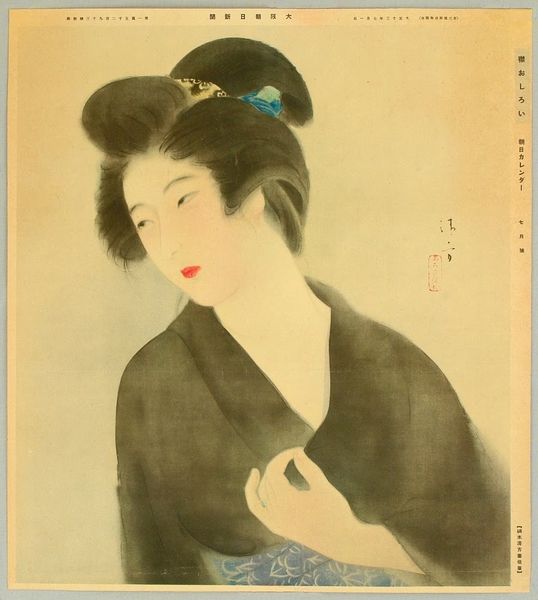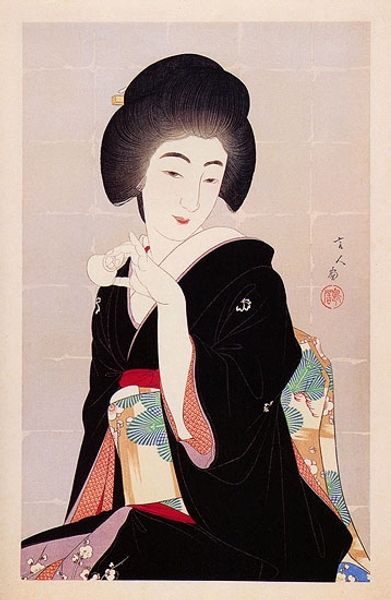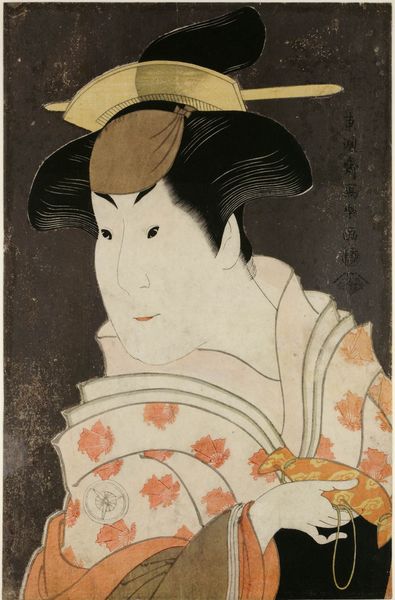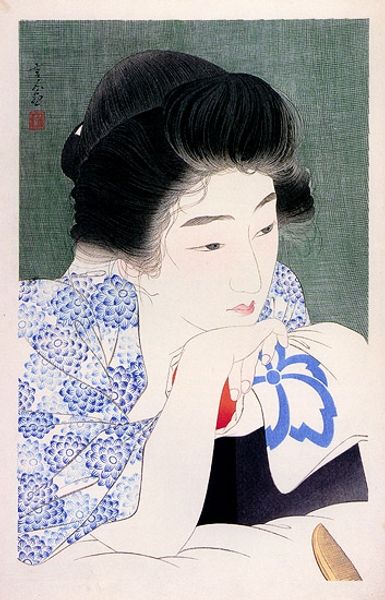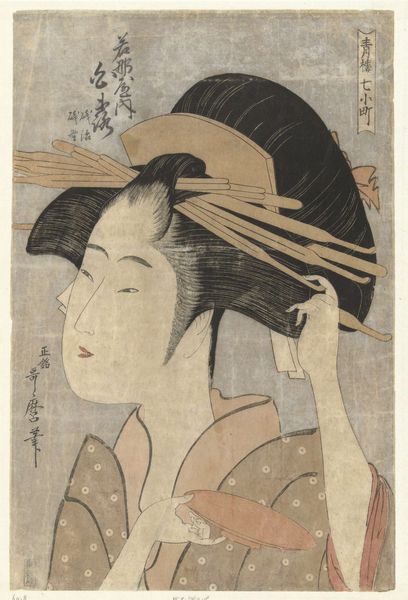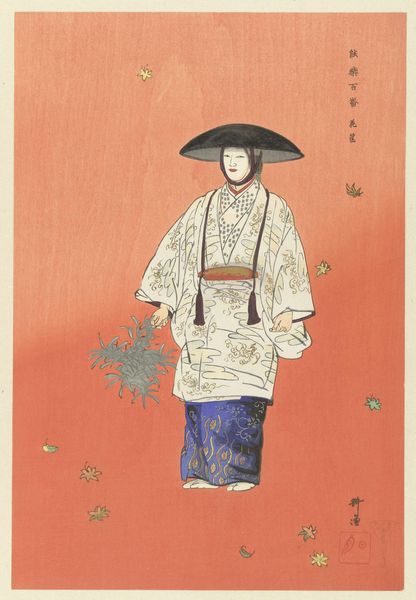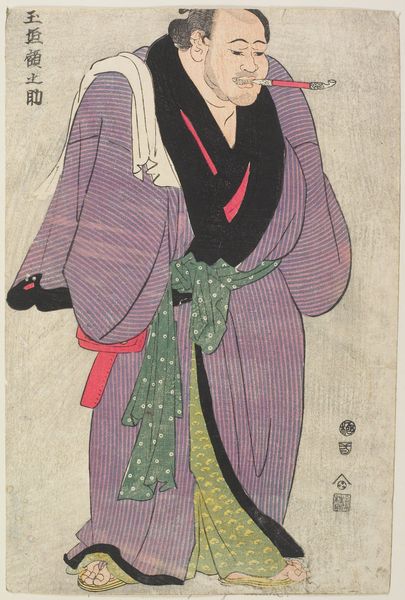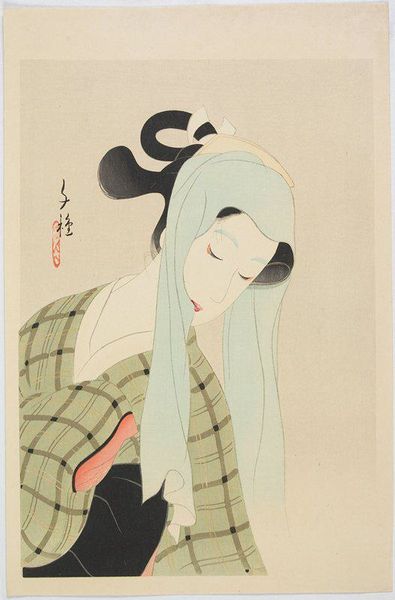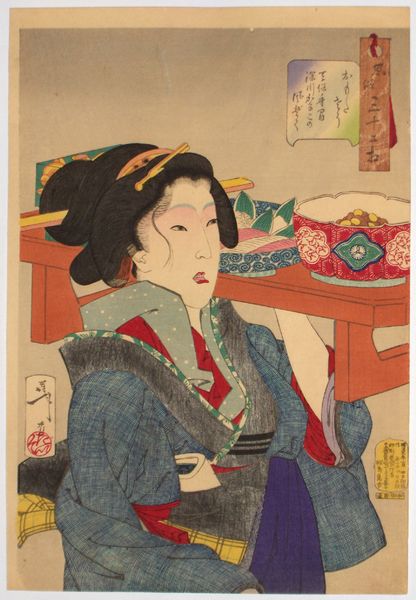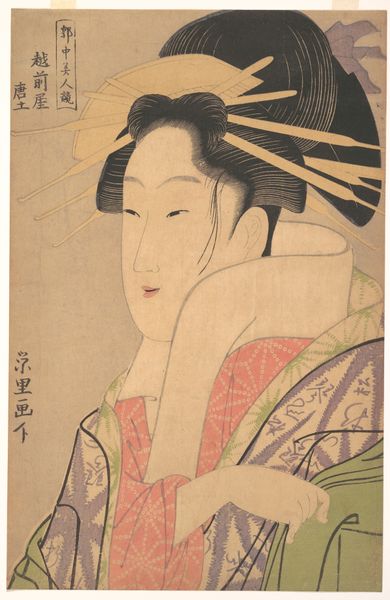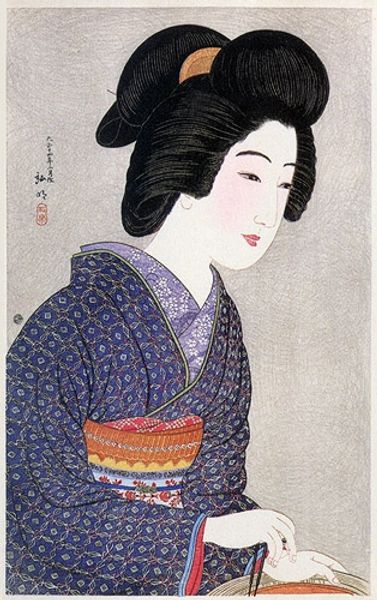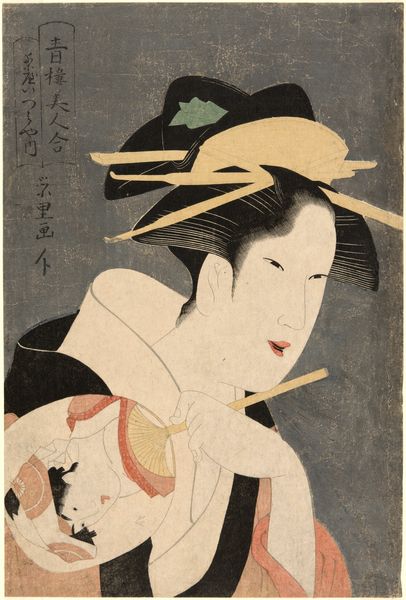
painting, woodblock-print
#
portrait
#
painting
#
caricature
#
ukiyo-e
#
woodblock-print
#
orientalism
#
watercolour illustration
Copyright: Kiyokata Kaburagi,Fair Use
Curator: Looking at Kiyokata Kaburagi's work, titled "Bad Hair Day," I'm immediately struck by a sense of melancholy, almost resignation in the figure. Editor: It certainly evokes a mood. I read it less as resignation and more as a subtle act of resistance. Her unkempt appearance, while perhaps unconventional, feels deliberate, a quiet rejection of societal expectations of feminine perfection. Curator: It's interesting you frame it as resistance. The print, possibly created with woodblock techniques and maybe watercolor details, fits broadly within the Ukiyo-e tradition, often focused on idealized beauty and transient moments. Yet this image feels… different. Editor: Precisely! Ukiyo-e frequently presented highly stylized portraits. By presenting this "flaw," this artist subtly challenged the conventions, a radical gesture towards authenticity in the presentation of women. It reframes the representation, almost as caricature of societal norms. Curator: I see your point. And those shadowed floral vines on the screen behind her amplify the mood of languor. One could interpret those symbolic flowers, normally connoting beauty and vitality, as also weary, subtly mimicking the subject’s state of being. The artist's choice creates depth here. Editor: Absolutely. Her slumped posture suggests a vulnerability that connects us to the subject on a more human level. Consider the implications - in a society where women were often portrayed as passive objects, Kaburagi seems to empower her with a distinct presence even in a moment of disarray. Curator: I'm now wondering about its relevance beyond the boundaries of Ukiyo-e itself, specifically how the idea of feminine representation evolved in Japan with exposure to Orientalist stereotypes. How much of our response now is colored by external expectations? Editor: That's a crucial point to consider. "Bad Hair Day" compels us to confront and question such projections by reclaiming the narrative for the individual woman within the frame. Ultimately, though, it sparks dialogues about identity and gender roles far beyond the canvas. Curator: Yes, a powerful reminder that art, even when seemingly depicting simple scenes, engages complex layers of historical context and individual emotional expression. Editor: Absolutely. These art historical conversations enrich our contemporary cultural landscapes and personal experience.
Comments
No comments
Be the first to comment and join the conversation on the ultimate creative platform.

